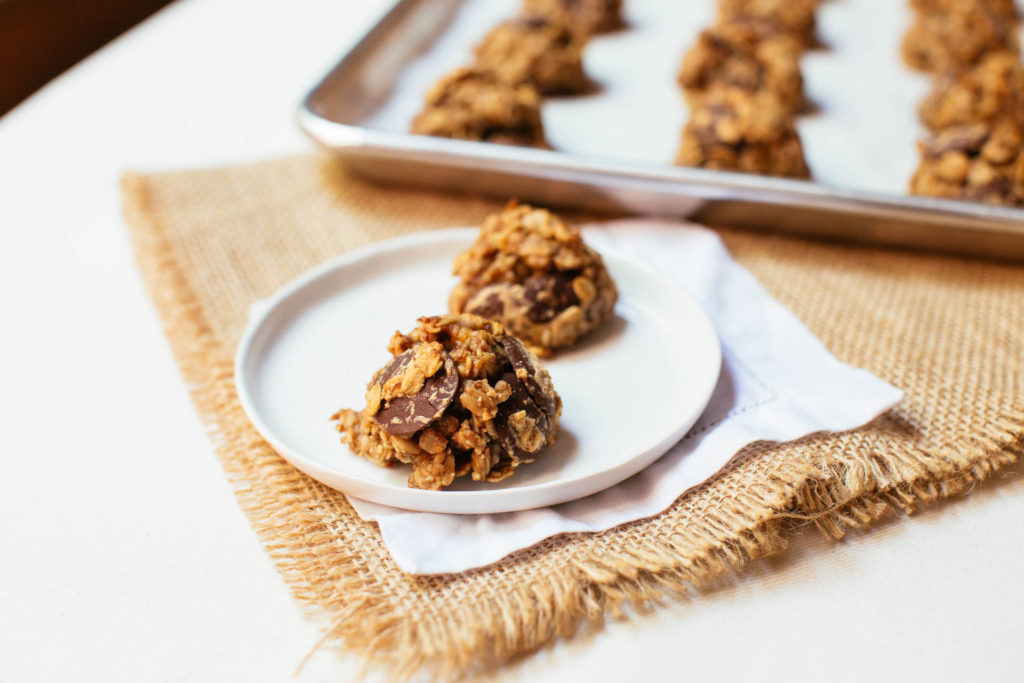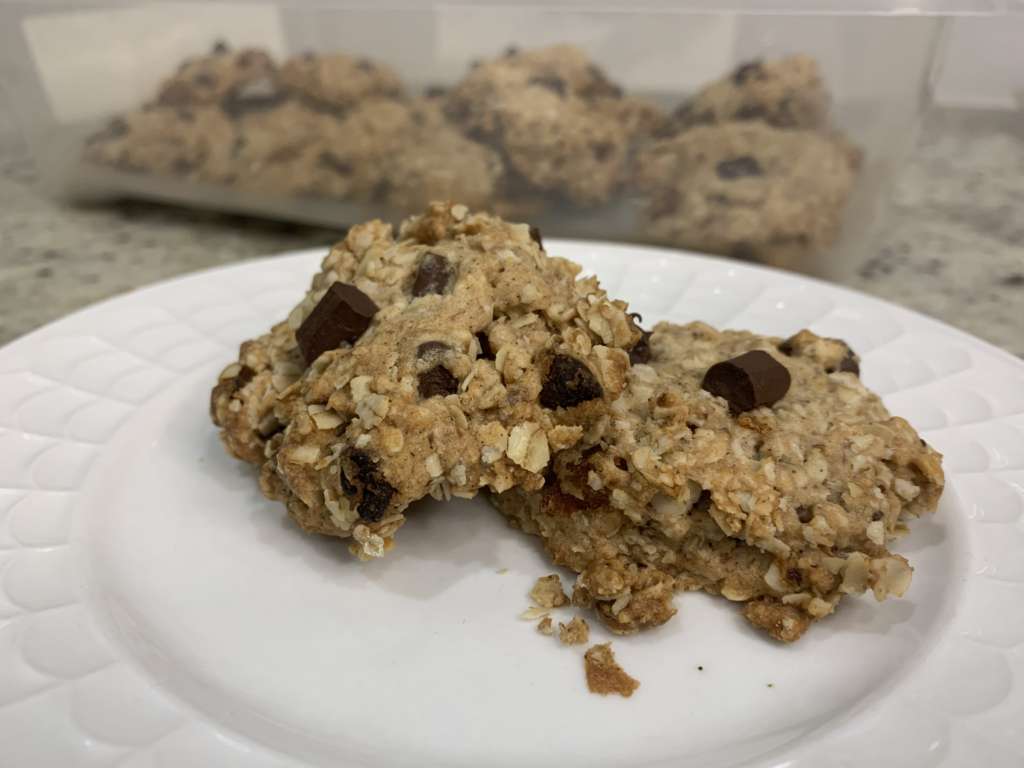In the realm of breastfeeding, lactation cookies have emerged as a beacon of support, providing nourishment and encouragement to mothers embarking on their breastfeeding journey. These delectable treats are not mere snacks; they are culinary allies, carefully crafted with ingredients that promote milk production and enhance the overall well-being of nursing mothers.
With a symphony of flavors and a chorus of nutritional benefits, lactation cookies are a testament to the power of food as medicine. Join us as we delve into the art of crafting these nourishing cookies, exploring the selection of wholesome ingredients, achieving a harmonious balance of macronutrients, and mastering the techniques that transform simple ingredients into lactation-boosting wonders.
Introduction
Lactation cookies are specifically designed to support breastfeeding mothers in their journey of providing nourishment to their infants. These cookies are not just delicious treats; they are nutritional powerhouses that can positively impact milk production and overall breastfeeding success.
Packed with carefully selected ingredients, lactation cookies offer a range of essential nutrients that play a crucial role in supporting milk production. Let’s explore the nutritional benefits of these cookies and understand how they can contribute to a successful breastfeeding experience.
Key Nutritional Ingredients
Lactation cookies are a rich source of various nutrients that are vital for milk production and overall maternal health. Some key ingredients include:
- Oats: A soluble fiber that helps regulate blood sugar levels and provides sustained energy.
- Flaxseed: A rich source of omega-3 fatty acids, which are essential for brain development and immune function.
- Brewer’s yeast: A natural galactagogue that has been shown to increase milk production.
- Fenugreek: Another galactagogue that has been traditionally used to promote milk flow.
- Nuts and seeds: Provide healthy fats, protein, and essential minerals like calcium and magnesium.
Selecting Ingredients
Choosing high-quality ingredients is crucial for creating lactation cookies that are not only delicious but also effective in supporting milk production. Nutrient-rich ingredients provide essential vitamins, minerals, and compounds that can help enhance lactation. Some commonly used ingredients in lactation cookies include:
- Oats: Oats are a rich source of fiber, protein, and iron, which are important for maintaining energy levels and supporting overall health. They also contain beta-glucan, a soluble fiber that has been shown to increase milk production.
- Flaxseed: Flaxseed is a good source of omega-3 fatty acids, which are important for brain development and overall health. It also contains lignans, which are plant compounds that have been shown to have estrogen-like effects and may help increase milk production.
- Brewer’s Yeast: Brewer’s yeast is a deactivated yeast that is rich in B vitamins, protein, and minerals. It is often used in lactation cookies to help increase milk supply and improve milk quality.
- Fenugreek: Fenugreek is a herb that has been traditionally used to increase milk production. It contains compounds called saponins, which are thought to stimulate milk production by increasing the release of prolactin, a hormone that is responsible for milk production.
These ingredients, among others, provide a range of nutrients that can support healthy lactation. When selecting ingredients for lactation cookies, it is important to choose high-quality, organic options whenever possible to ensure the best results.
Creating a Balanced Recipe
Achieving a balance of macronutrients (carbohydrates, proteins, and fats) is crucial in lactation cookies. This ensures they provide sustained energy, support milk production, and promote overall well-being.
- Carbohydrates: Provide quick energy and are essential for breastfeeding mothers. Choose whole grains, fruits, and vegetables for fiber and complex carbs.
- Proteins: Support milk production and repair body tissues. Include sources like nuts, seeds, and beans in your recipe.
- Fats: Provide energy, aid in hormone production, and enhance nutrient absorption. Use healthy fats from sources like avocados, olive oil, or nut butters.
Natural sweeteners, such as honey, maple syrup, or dates, can be used in moderation to enhance sweetness without compromising nutritional value. However, artificial sweeteners should be avoided due to their potential adverse effects on health.
Step-by-Step Baking s

Preparing and baking lactation cookies is a simple yet rewarding process that yields delicious and nutritious treats. Whether you’re a seasoned baker or just starting, this step-by-step guide will help you create the perfect batch of lactation cookies.
Before you begin, gather all the necessary ingredients and equipment. Make sure you have a large mixing bowl, a baking sheet, parchment paper, and measuring cups and spoons. Additionally, preheat your oven to the desired temperature specified in the recipe.
Preparation
Begin by measuring and preparing all the ingredients according to the recipe. This includes dry ingredients like flour, oats, and spices, as well as wet ingredients like butter, eggs, and honey. If using fresh ingredients like fruits or nuts, ensure they are washed and chopped to the desired size.
Mixing
In a large mixing bowl, combine all the dry ingredients. In a separate bowl, whisk together the wet ingredients until well blended. Gradually add the wet ingredients to the dry ingredients, mixing until just combined. Avoid overmixing, as this can result in tough cookies.
Baking
Line a baking sheet with parchment paper. Using a cookie scoop or a tablespoon, drop the cookie dough onto the prepared baking sheet, spacing them evenly apart. Flatten the cookies slightly with a fork or the back of a spoon to create a crisscross pattern.
Place the baking sheet in the preheated oven and bake for the specified time, or until the edges of the cookies are golden brown and the centers are set. Remove the baking sheet from the oven and let the cookies cool on the sheet for a few minutes before transferring them to a wire rack to cool completely.
Cooling and Storage
Once the cookies are completely cooled, store them in an airtight container at room temperature for up to 3 days. You can also freeze the cookies for up to 2 months. When ready to enjoy, thaw the cookies at room temperature or warm them in the oven for a few minutes.
Variations and Modifications
The basic lactation cookie recipe can be easily adapted to accommodate different dietary preferences and restrictions. For a gluten-free option, use gluten-free flour or oat flour instead of all-purpose flour. To make vegan cookies, substitute flax eggs for regular eggs and use plant-based butter or coconut oil instead of butter.
You can also add various ingredients to enhance the flavor and nutritional value of your lactation cookies. Consider adding dried fruits like cranberries or raisins, nuts like walnuts or almonds, or seeds like chia or flax. Experiment with different spices like cinnamon, nutmeg, or ginger to create unique flavor combinations.
Storing and Preserving Lactation Cookies
Maintaining the freshness and nutritional value of lactation cookies is crucial to ensure their quality and effectiveness. Proper storage and preservation methods help retain their flavors and essential nutrients.
Proper Storage Techniques
- Airtight Containers: Store lactation cookies in airtight containers to prevent moisture and air from entering, which can cause them to become stale or moldy.
- Cool and Dry Environment: Keep the containers in a cool and dry place, away from direct sunlight and heat sources. Ideal storage temperatures range between 60°F (15°C) and 75°F (24°C).
- Refrigeration: For extended storage, refrigeration is recommended. Place the airtight containers in the refrigerator for up to two weeks.
Freezing Lactation Cookies
Freezing lactation cookies is an excellent option for long-term storage.
- Individual Wrapping: Wrap each cookie individually in plastic wrap or parchment paper to prevent freezer burn.
- Airtight Containers or Freezer Bags: Place the individually wrapped cookies in airtight containers or freezer bags to ensure freshness.
- Labeling and Dating: Clearly label the containers or bags with the date of freezing to keep track of their storage duration.
- Freezing Duration: Lactation cookies can be stored in the freezer for up to three months while maintaining their quality and nutritional value.
Thawing and Reheating
When ready to consume, thaw the frozen lactation cookies overnight in the refrigerator or at room temperature for several hours.
- Reheating: If desired, reheat the cookies in a preheated oven at 350°F (175°C) for a few minutes until warmed through.
- Microwave: Alternatively, microwave the cookies on low power for short intervals, checking frequently to prevent overheating.
Importance of Labeling and Dating
Labeling and dating lactation cookies are essential for ensuring their safe consumption.
- Labeling: Clearly label the containers or bags with the type of cookie, ingredients used, and any potential allergens.
- Dating: Include the date of baking or freezing to keep track of their freshness and ensure they are consumed within a safe timeframe.
By following these storage and preservation techniques, you can maintain the quality and nutritional value of lactation cookies while ensuring their safe consumption over time.
Additional Tips and Considerations

Creating delicious and nutritious lactation cookies is an art form that allows for creativity and customization. Here are some additional tips to enhance the flavor, texture, and benefits of your lactation cookies:
Flavor and Texture Enhancements
- Incorporate spices: Adding spices like cinnamon, nutmeg, or ginger can provide warmth and depth of flavor to your cookies.
- Add nuts and dried fruits: Nuts like walnuts, almonds, and pecans, and dried fruits like cranberries, raisins, and apricots, can add texture, sweetness, and nutritional value.
- Experiment with different extracts: Vanilla extract is a classic, but you can also try almond, lemon, or peppermint extract for a unique twist.
Herbs and Supplements for Milk Production
Certain herbs and supplements have been traditionally used to support milk production. Adding these ingredients to your lactation cookies can provide an extra boost:
- Fenugreek: Known for its galactagogue properties, fenugreek can help increase milk supply.
- Blessed thistle: This herb is believed to stimulate milk production and improve its quality.
- Moringa: Rich in nutrients like iron and calcium, moringa is considered beneficial for both mothers and babies.
Packaging and Presentation
If you’re planning to give your lactation cookies as gifts or sell them locally, consider these packaging ideas:
- Gift boxes: Pack your cookies in decorative boxes with ribbons or bows for a personal touch.
- Mason jars: Fill mason jars with layers of cookies and seal them with lids for a rustic and charming presentation.
- Cookie bags: Use cellophane bags or resealable bags to package individual cookies, adding a label with your brand or a special message.
Conclusion
As you embark on your lactation cookie-baking adventure, remember that the journey is as rewarding as the destination. Embrace the process of selecting wholesome ingredients, meticulously measuring and mixing, and nurturing the cookies in the warmth of your oven. Each bite of these nourishing treats will be a celebration of your commitment to your breastfeeding journey and a testament to the power of nature’s bounty.
Q&A
What are the key ingredients to look for in a healthy lactation cookie recipe?
When selecting a lactation cookie recipe, prioritize ingredients known to support milk production, such as oats, flaxseed, brewer’s yeast, and fenugreek. These nutrient-rich ingredients contribute to a well-rounded nutritional profile and provide essential vitamins, minerals, and galactagogues that stimulate milk production.
How do I ensure a balanced macronutrient profile in my lactation cookies?
Achieving a balance of macronutrients (carbohydrates, proteins, and fats) is crucial for optimal lactation cookie nutrition. Aim for a recipe that incorporates complex carbohydrates for sustained energy, protein for tissue repair and milk production, and healthy fats for hormone balance and nutrient absorption.
Can I make lactation cookies if I have dietary restrictions?
Absolutely! With creativity and careful ingredient selection, you can adapt lactation cookie recipes to accommodate various dietary needs. For gluten-free options, substitute oats with gluten-free flour blends, and for vegan alternatives, use plant-based milk and butter substitutes. Explore different nut and seed combinations to maintain a rich nutritional profile.
